What is Dias de los Muertos and how can you experience 'Day of the Dead' in Mexico?

Imagine Mexico for a moment. You may have been deceived in to thinking everyone runs around in Lucha Libre wrestling masks; eating fajitas, downing tequila shots, or dancing in street carnivals with their faces painted like sugar skulls. The world seems to have created a fantasised view of what Mexico is all about. All these perceptions are way out of sync with what’s actually happening. Dig beneath the surface and you’ll find a much richer culture. Especially when it comes to Dias de los Muertos, or Day of the Dead as it’s known to us.
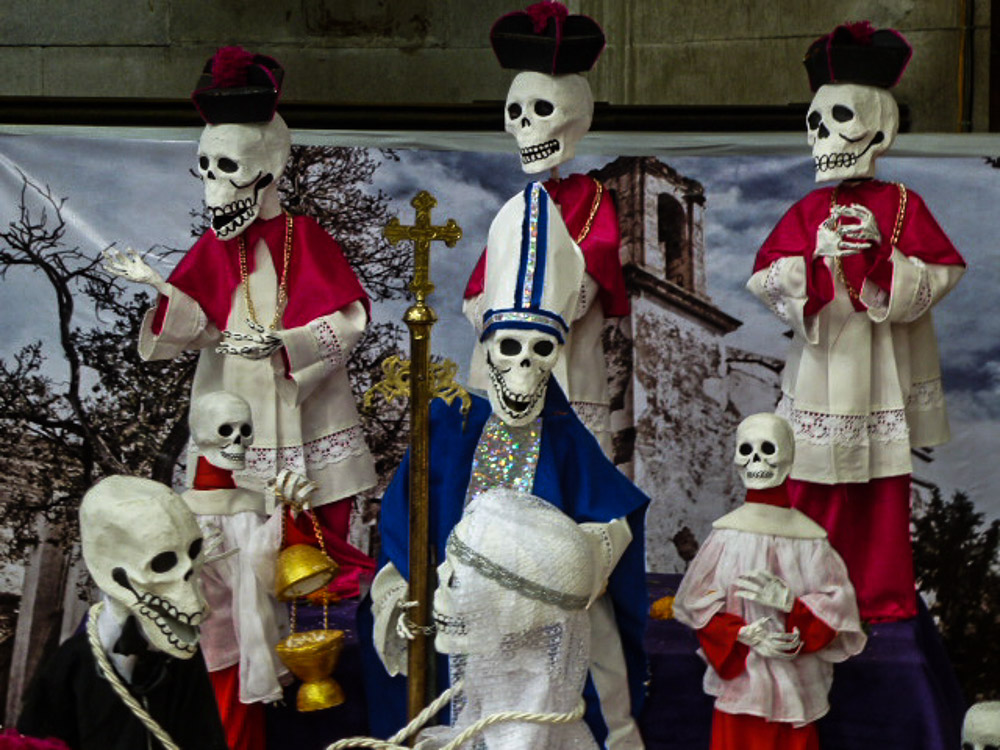
It was a lifelong dream to experience Mexico’s Dias de los Muertos, so when the opportunity arose, we had to take it. Not before doing some research though, as your pre-conceptions may mean you miss out. Here we share pictures from our trip. Answer questions that give you an insight into what it’s about and offer advice to help you have a great experience. Read on…

Is Mexico always decorated with sugar skulls?
The first illusion to shatter is that Mexico decorates itself with sugar skulls throughout the year. That’s not the case as Dias de les Muertos happens once a year, over the period of October 31st – November 2nd. In the month preceding Dias de los Muertos, you will see decorations and displays appearing in towns.
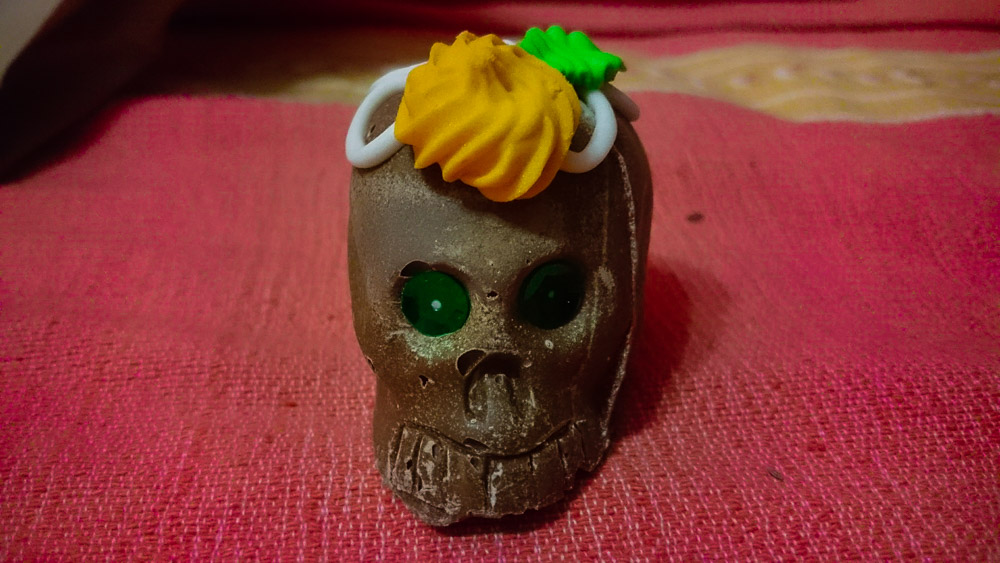
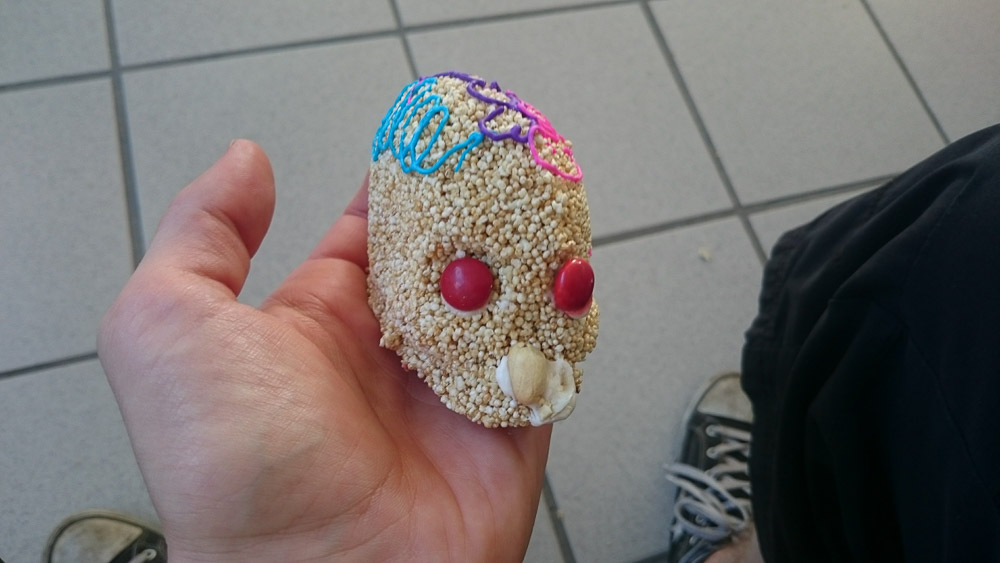
Is Dias de los Muertos Mexican Halloween?
Not quite. For hundreds of years the Aztecs celebrated their dead with elaborate festivals. When the Spanish invaded, these rituals merged with Christian traditions. Dias des los Muertos finally became a formal celebration. Once a summer festival, it now takes place during All Saints Day (November 1st) and All Souls Day (November 2nd).
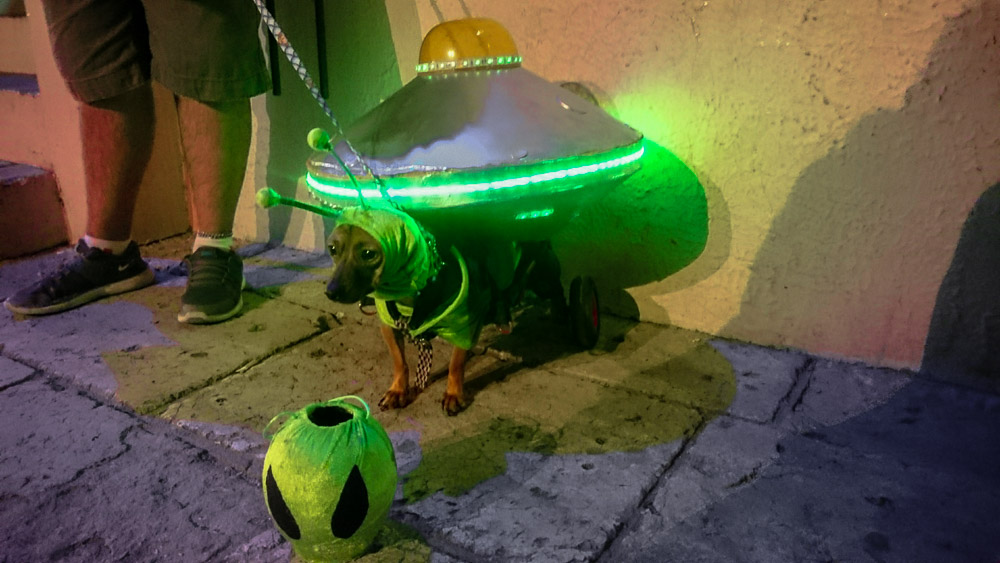
What is Dias de los Muertos celebrating?
It’s believed that every year, dead souls return to earth to visit their loved ones. Children return on November 1st, known as El Día de los Angelitos (Day of the little Infants or Angels Day). Adults return on November 2nd, known as ‘Dias de los Muerots’ (Day of the Dead).
In the run up to this families build shrines for their loved ones and decorate their graves. A picture of the deceased forms the centrepiece, scented marigolds and candles help guide their soul back home. Gifts are placed at the altar. This might be their favourite beer, a drop of Mezcal, pan de muerto (bread of the dead) or perhaps a pack of cigarettes. After all, it’s important the souls can join the party!
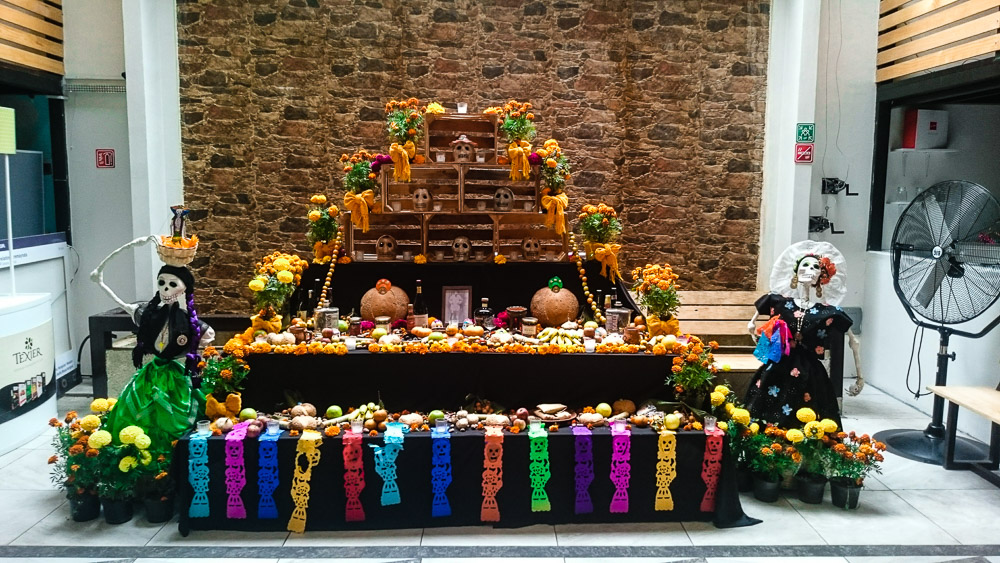
During Dias de los Muertos, does everyone throw parties and dance in the streets?
No. Although a celebration of life, it’s a much more sombre and relaxed affair. Families visit the graves of their loved ones over the evenings of October 31st through to November 2nd. They’ll chat, reminisce, share stories, laugh and drink (a lot). Some families will party at the side of a grave throughout this whole period.

Where in Mexico City can I see the Dias de los Muertos carnival from the James Bond Movie, Spectre?
You can’t. It fabricated for the movie! In the opening scene, the streets are full with floats, dancers and music. Upon witnessing this, lots of tourists decided to travel there and saw….nothing.
There has since been huge pressure on Mexico City to adopt such an elaborate event for Dias de los Muertos. It’s taken a few years, but a parade now usually happens on the Saturday before Dias de los Muertos. It’s not on the scale of Spectre though and is prone to last minute date changes and cancellation.
There’s been uproar from citizens as it’s out of line with traditional celebrations. The tourist dollar is lucrative, but it commercialises something that’s personal to a lot of people. ‘Halloween’ Mexico style anybody?
Elsewhere you might get to see a parade, but it won’t be on the scale of Spectre. It’s more likely to be an informal outbreak of dancing than a pre-arranged carnival.

Where in Mexico can I celebrate Dias de los Muertos?
Traditional celebrations take place in the southern and central areas of Mexico. We’d seen people arguing online about where the ‘best’ place is to experience Dias de los Muertos. But you can’t be everywhere at once, so you’ll have to decide where suits you. Don’t worry though, you’re guaranteed an incredible time wherever you go. We travelled 1,000 miles across Mexico the week before and week after Dias de los Muertos. Here’s how we spent our time over the period of October 30th – November 3rd.
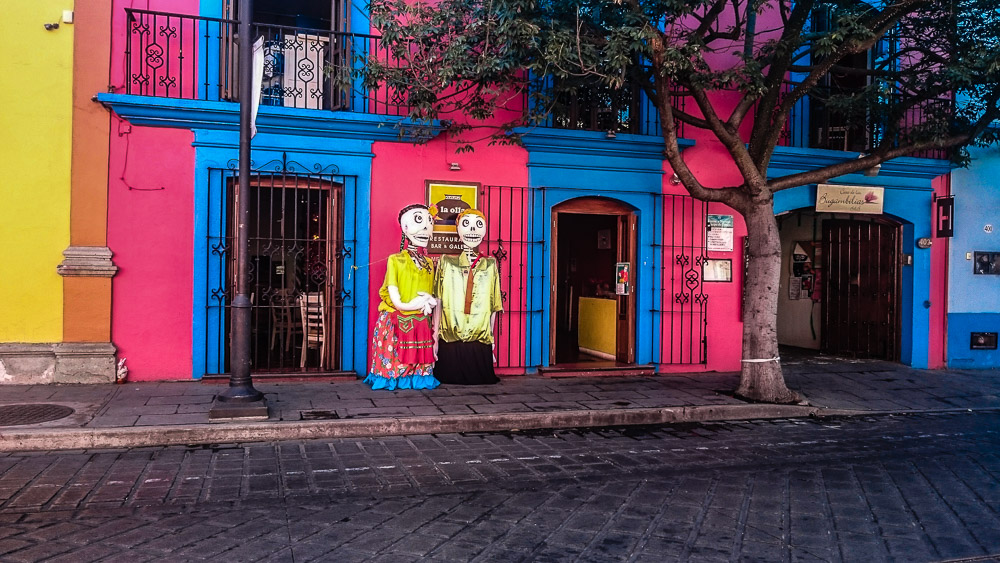
A Guide to Dias de los Muertos
OAXACA
We arrived in Oaxca on the overnight ADO bus from San Cristobal de las Casas and set about exploring the town. You see the cultural difference here right away.
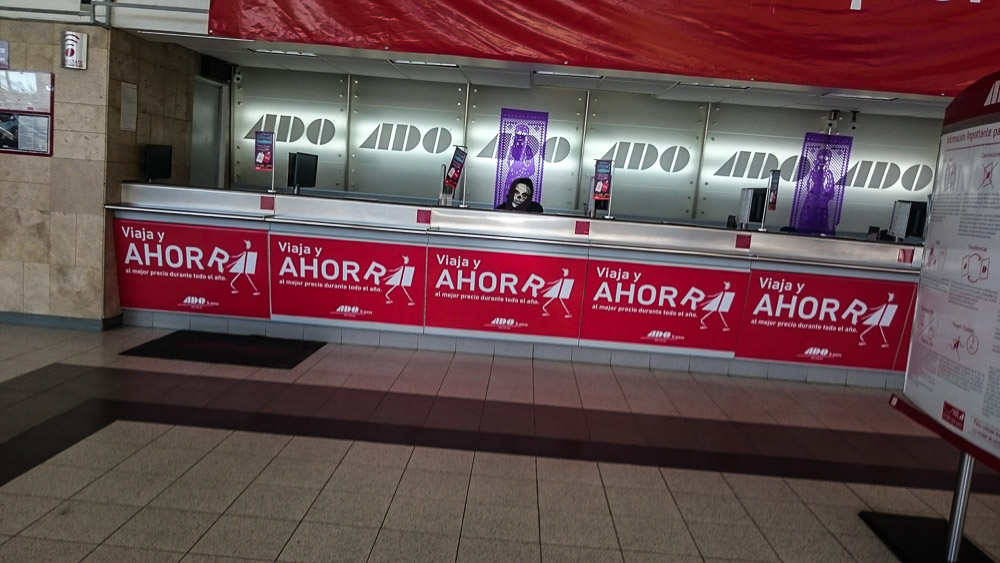

Places we had visited had decorated for the occasion, but Oaxaca steps it up a level. The streets and shops were covered in sugar skulls and paper bunting flickered in the wind. Market stalls at 20 de Noviembre or Central de Abastos all jostle for space, selling crafts, marigolds and pan de muerto. It’s well worth spending the day walking around and soaking up the experience. The Zocalo (centre) has small booths handing out a timetable of events, but nothing keeps to time.

At night, the Catholic Church Templo de Santo Domingo on Calle Macedonio Alcalá forms a central hub for activities. Here, the old mixes with the new. Teenagers have a more Americanised approach, in the vein of Halloween. Dressing up in horror movie costumes, or painting gore on their faces. Children will sit on the curb in elaborate costumes, putting on a small show to try and raise a few pesos. A notable performance was by a young child in a La Cavalera style dress. She sat stabbing her ‘deceased’ brother with a plastic knife to earn some change. Nice!
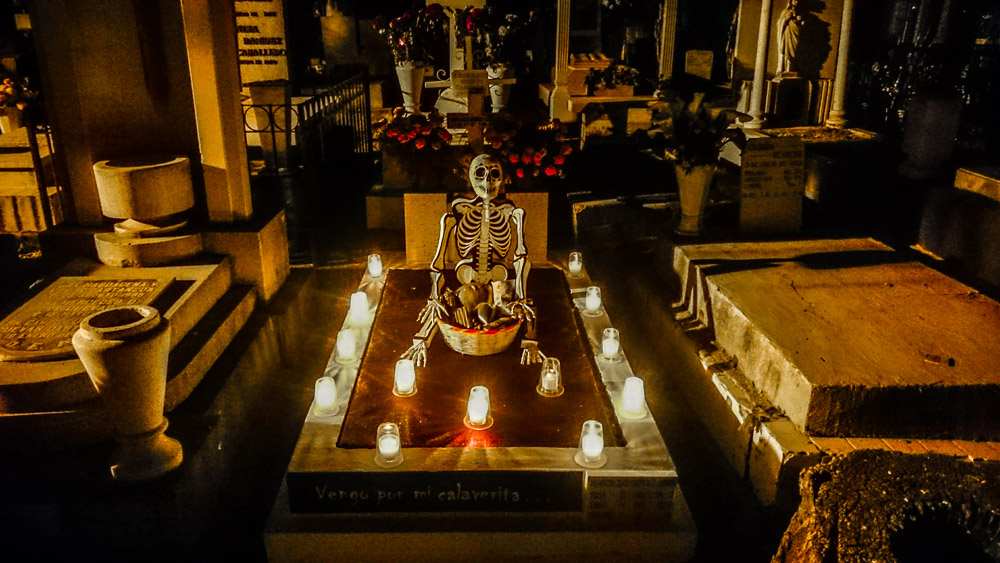
An informal parade of about 50 people started at Templo de Santo Domingo and continued down the street. Drummers and a brass band played as participants jumped around. A man at the front let off rocket fireworks in his hand. Make sure your travel insurance covers you in the event of an accident!
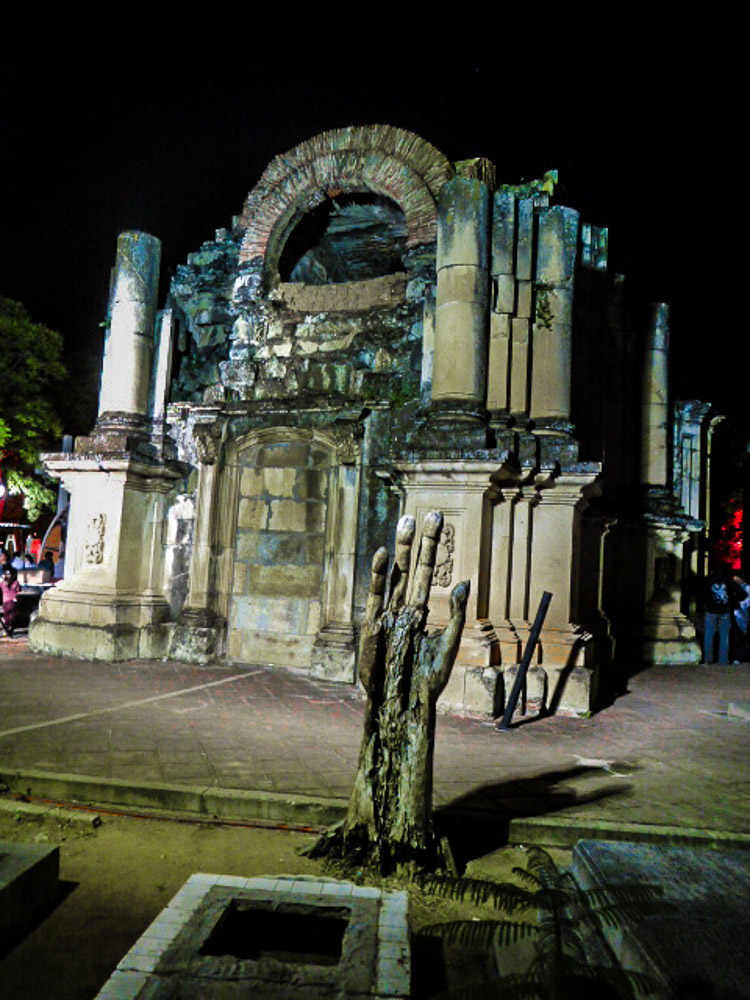
SAN MIGUEL PANTHEON GENERAL CEMETERY, OAXACA
On the evening of October 31st we headed over to the San Miguel Pantheon General Cemetery. It’s a 10 minute walk from town and is the real Dias de los Muertos experience. Family members sit huddled around their loved ones elaborately decorated graves. Some joyfully having a drink, some in complete silence, reflecting back over memories.
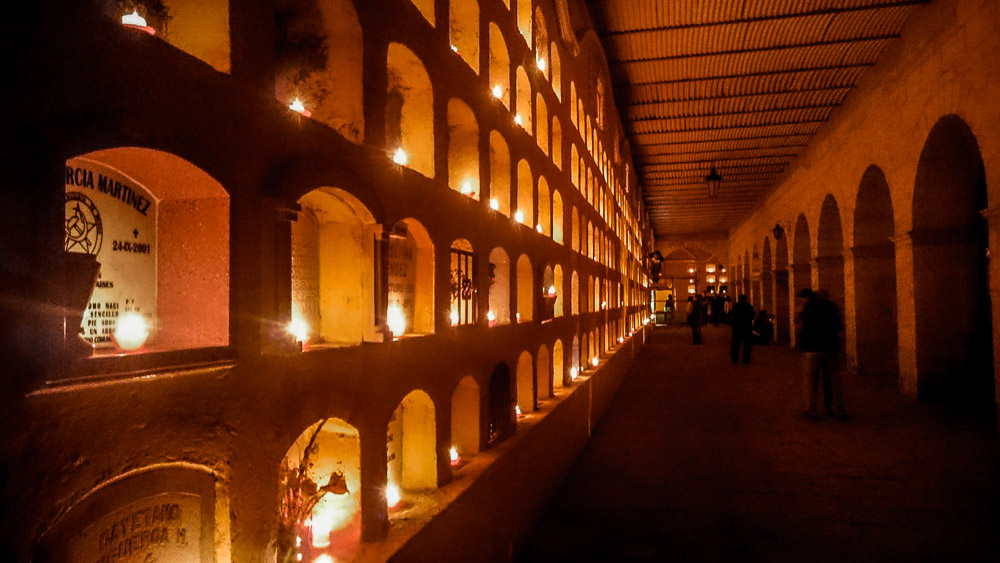
Locals told us that the families will usually be very happy for you to strike up a conversation and join them. Yet our Spanish isn’t the best and we didn’t want to intrude. We also didn’t want to turn their personal moments in to a tourist experience. We also avoided asking to take photographs of any people in celebratory mourning.
As the fascination of Dias de los Muertos grows, there are an increasing number of us tourists visiting Oaxaca. Maintain respect at all times. We saw pretty blonde American girls crouching by families. Tilting their heads to one side, flicking their hair, waving peace fingers and pouting for the ‘perfect’ Instagram shot. Please don’t be those people.
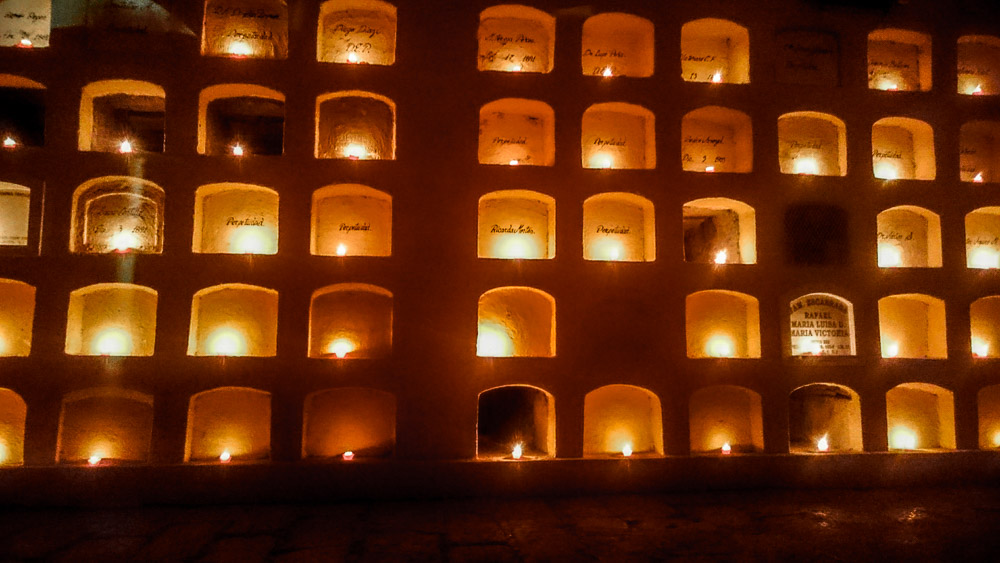
San Miguel Pantheon General Cemetery is a big place and you can spend hours wandering amongst the graves. The later you arrive, the less other tourists you’ll see. 10:30pm onward is a good time to be there.
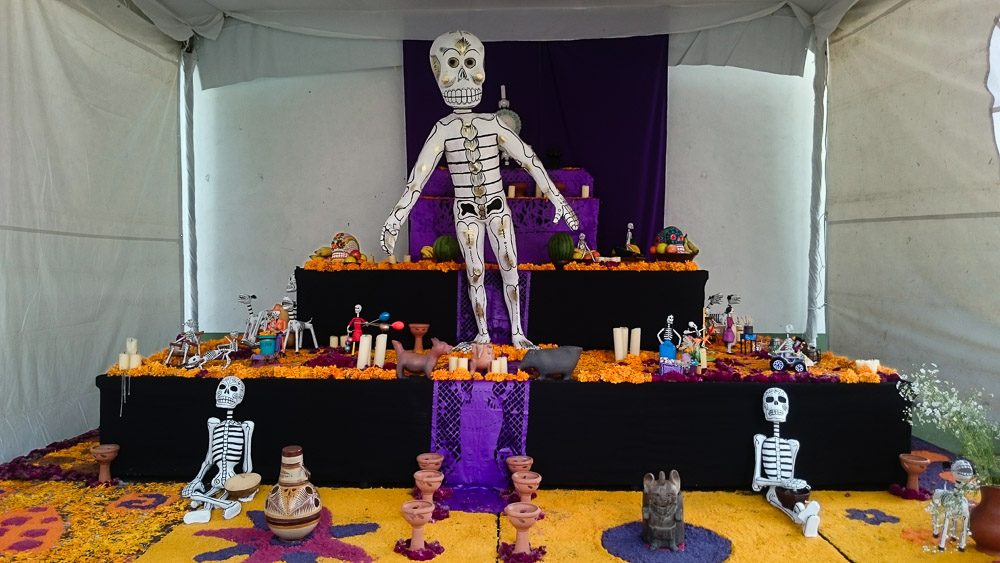
MEXICO CITY
The next day we spent travelling to Mexico City. At night we headed over to the Arena to see Lucha Libre (Mexican Wrestling). There was a Dias de los Muertos special, where the losers of each fight got carried off to the underworld by hoards of skeletons. Lucha Libre was one of the best experiences in Mexico City and is worthy of its own post. I’ll write about that soon.
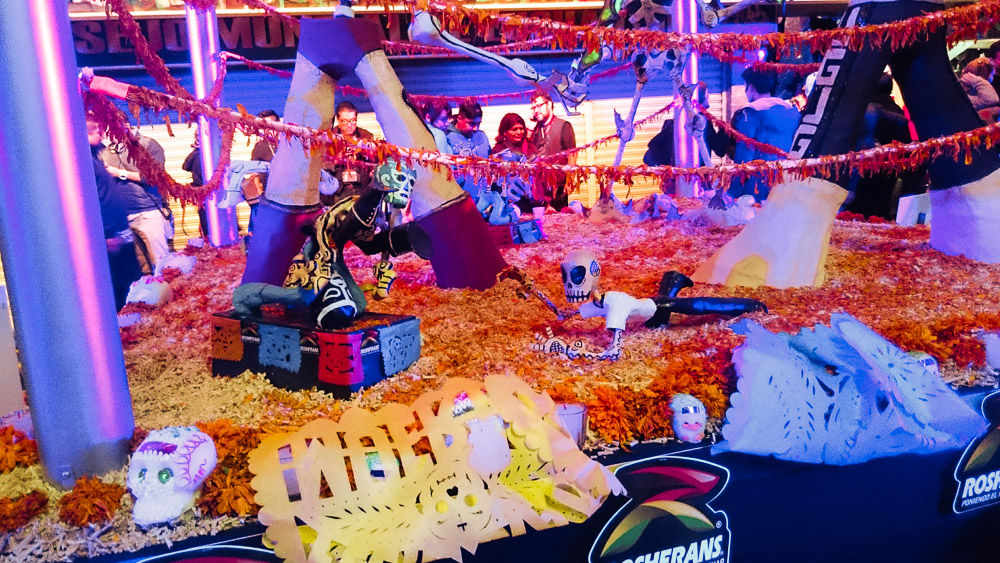
On November 2nd we explored Mexico City. As anticipated, it was completely different to traditional Oaxaca. The Zocalo is decorated with models of José Guadalupe Posada style cavaleras (i.e. ‘Mexican skeletons’) and there’s a stage with pop music. That’s more or less where the celebrations end.
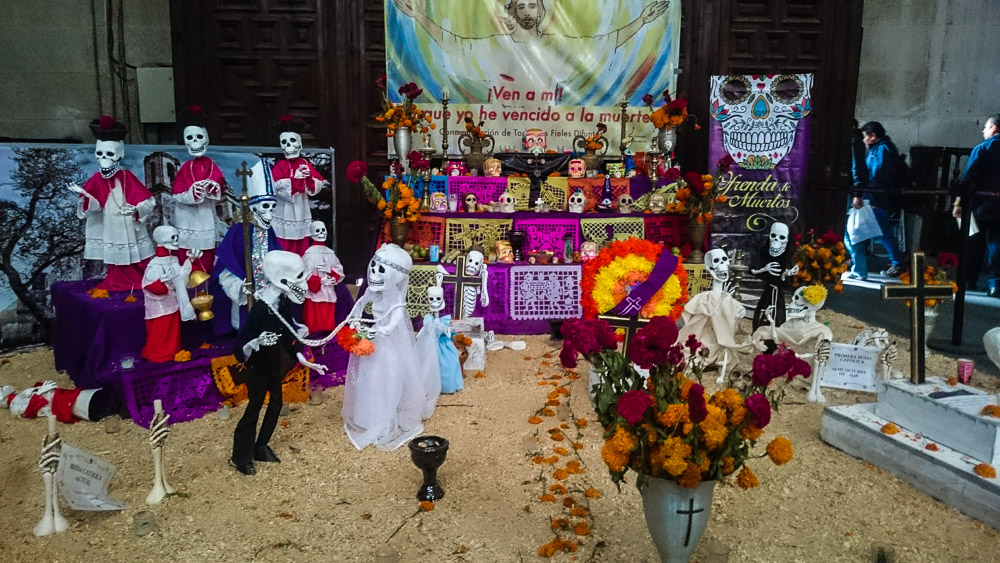
San Andrés Mixquic cemetery
Our aim wasn’t only to see Mexico City though. We’d heard of San Andrés Mixquic, a small Barrios Mágicos (magical neighbourhood) village 50 km outside of the city. We’d hired a car for our onward travels and were going to visit San Andrés Mixquic on the evening of November 2nd. Instead we decided to visit during the following day.
A few factors influenced our decision not to drive there in the evening:
- We were advised that westerners driving a car to a remote location in the middle of night might not be a good idea.
- Once outside of Mexico City, there’s no lights on the road and it’s full of potholes.
- Approaching the village, the road can sometimes get gridlocked and you may not even reach it.
- The option of a taxi didn’t appeal. People had reported drivers wanting to return to Mexico City almost as soon as you arrived.
- The cemetery at the San Andres Apostol church is very small. We would have been intruding on families private moments to try and get in on the experience. Something we wanted to avoid.

There’s always a fear of missing out, but it was a decision we were happy with. Avoiding the huge potholes we took the hour and a half drive the following day. This gave us a very personal experience. Arriving in San Andrés Mixquic we were able to park outside the San Andres Apostol church. We could walk freely amongst the tightly packed graves without disturbing anybody. I don’t know how you would find space at night, but in this moment we were the only ones there.
It gave us time to relax and enjoy the elaborate floral displays, carefully arranged piles of bones and lucha libre carved watermelons! A perfect way to end our Dias de los Muertos experience.
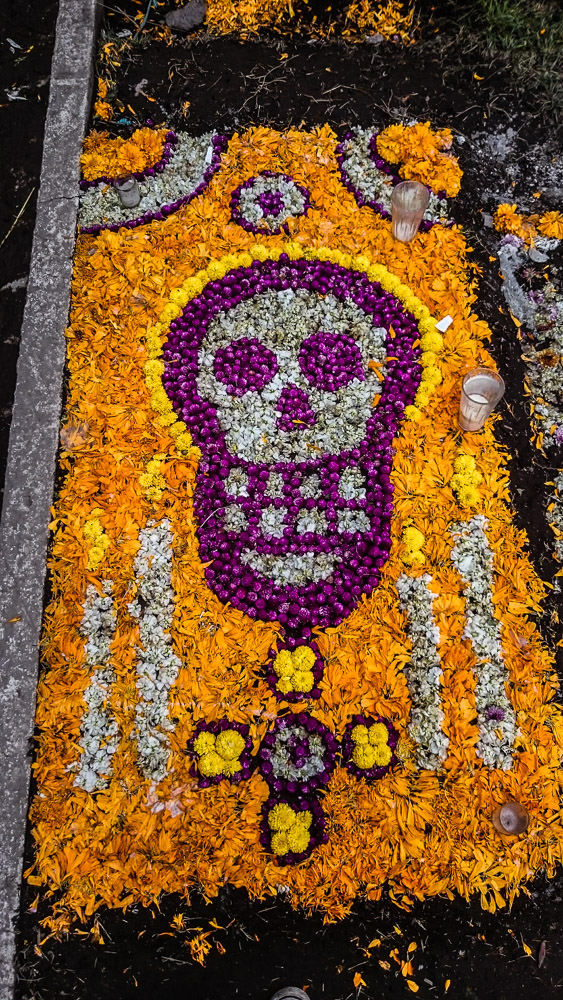
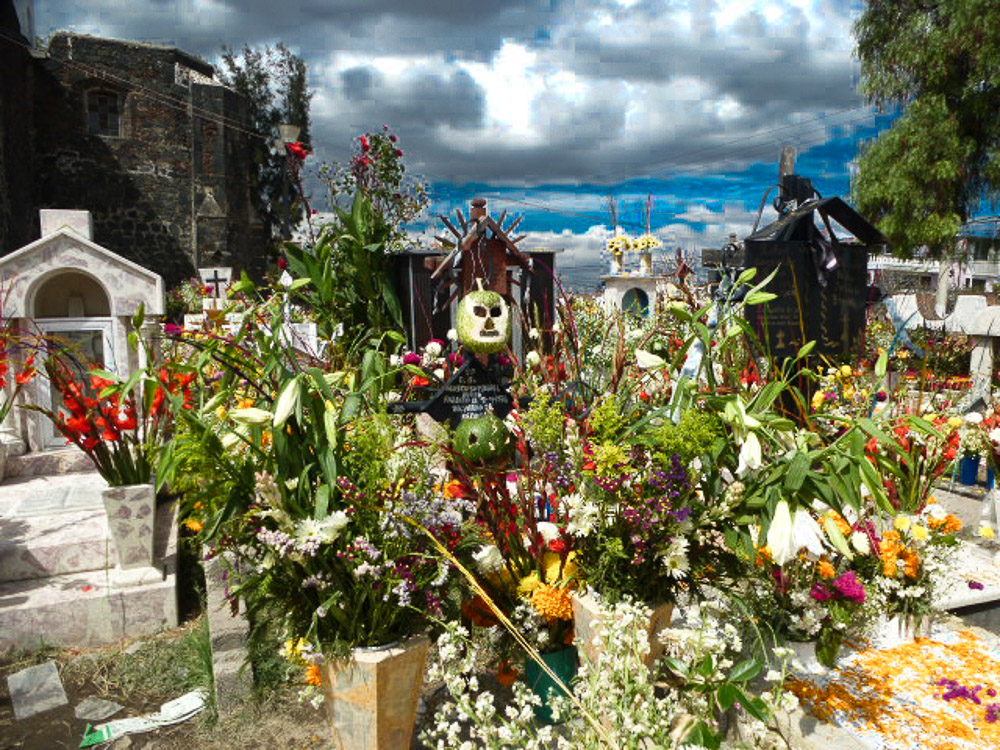
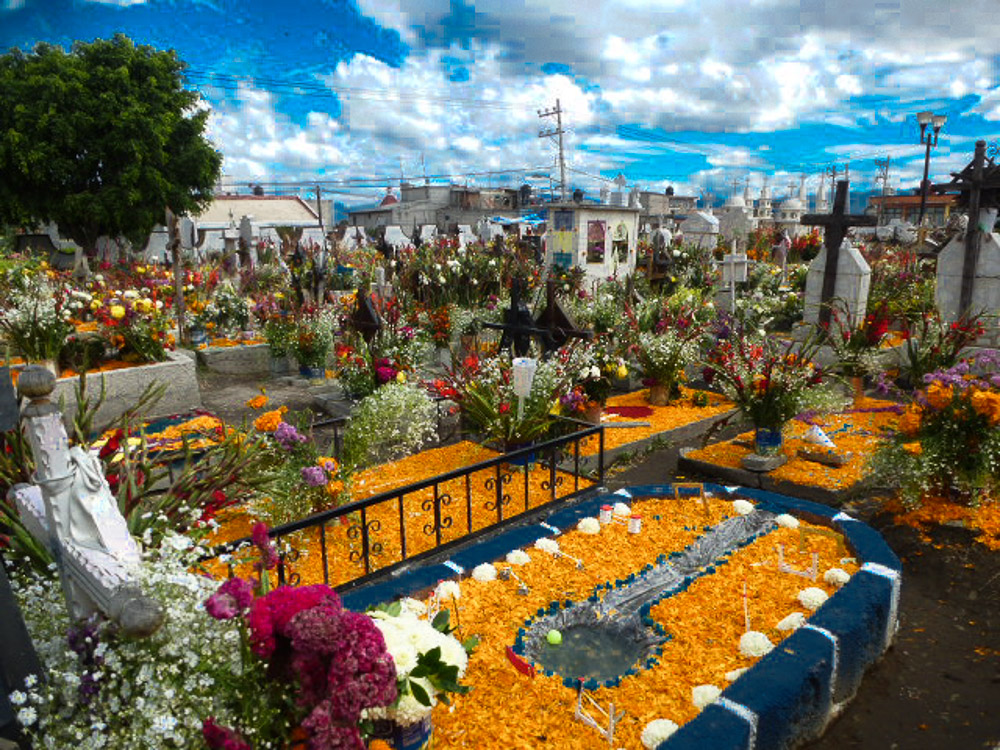
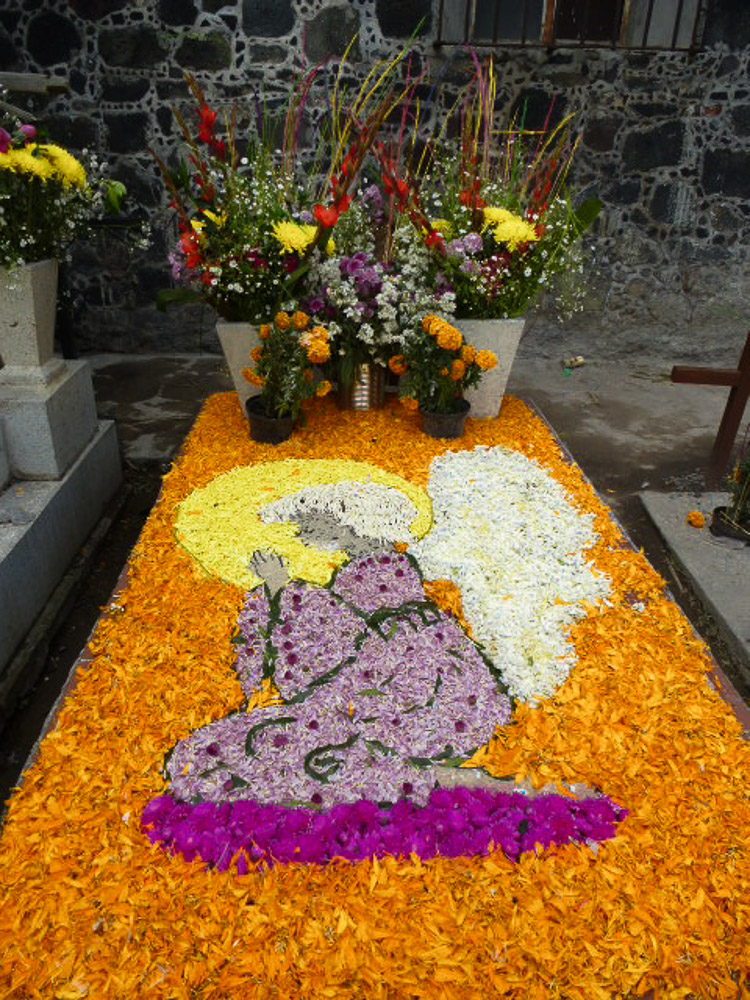
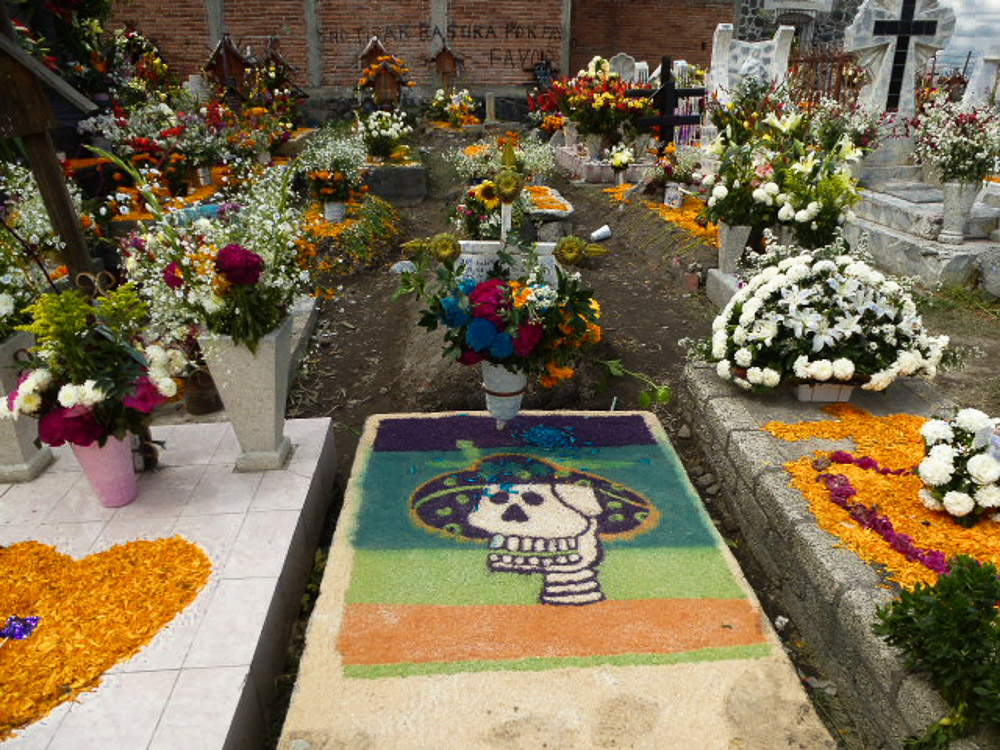
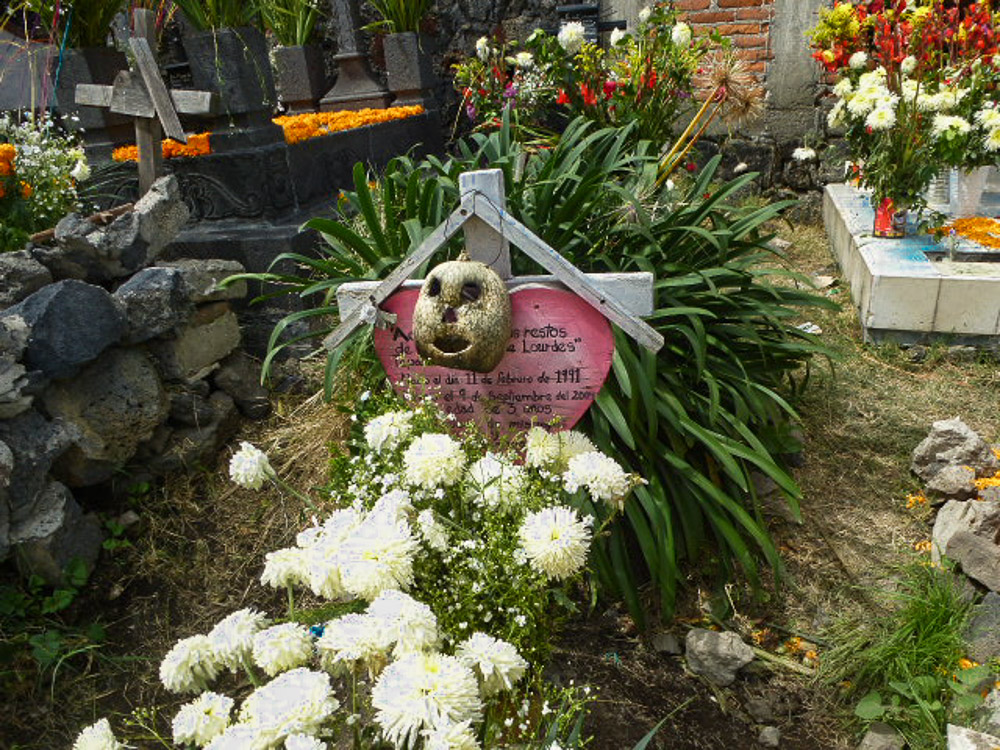
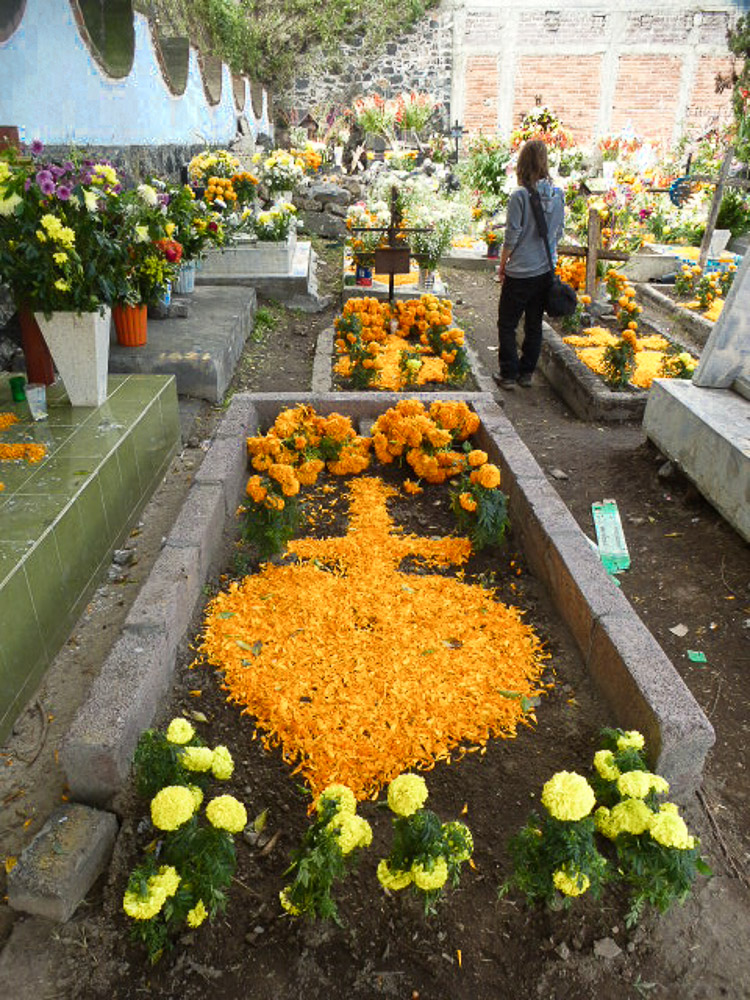
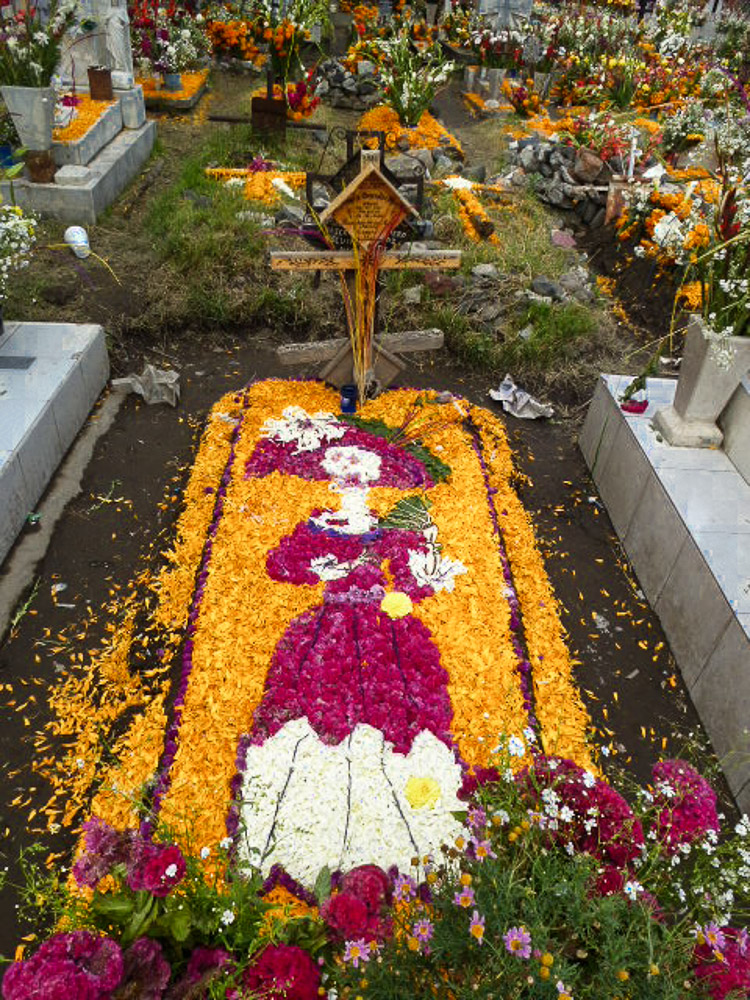
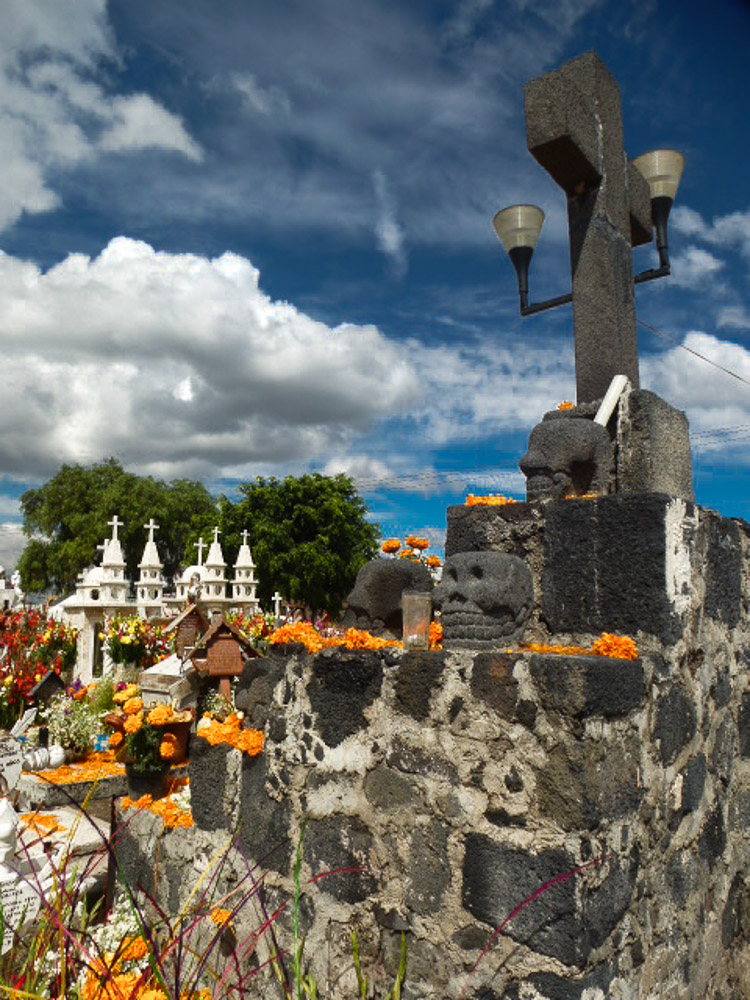
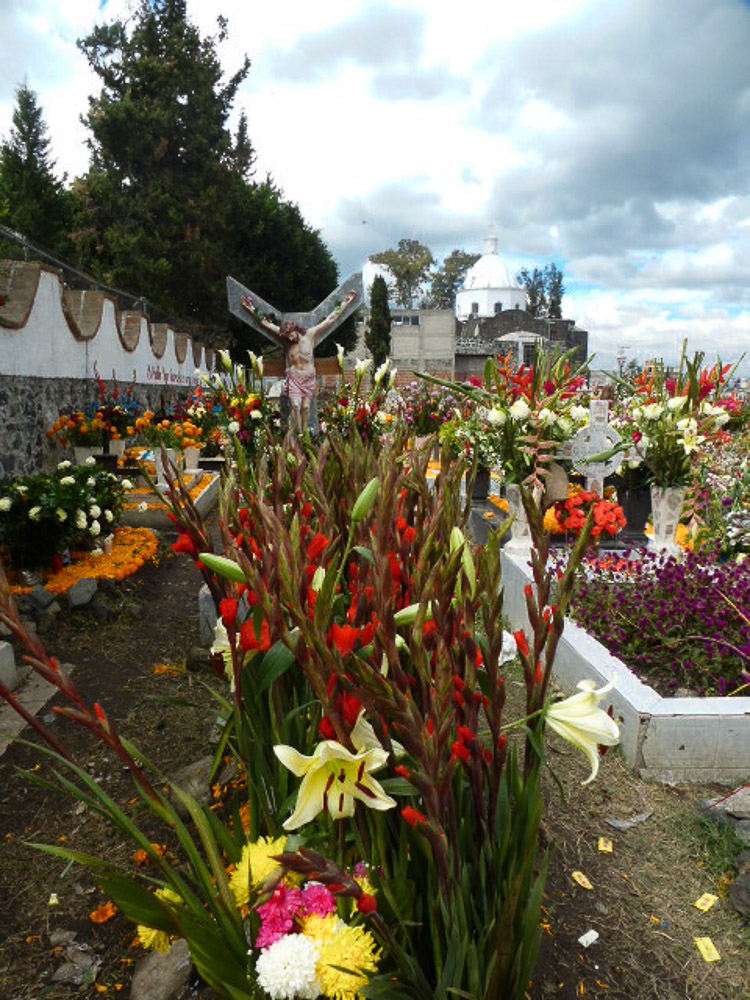
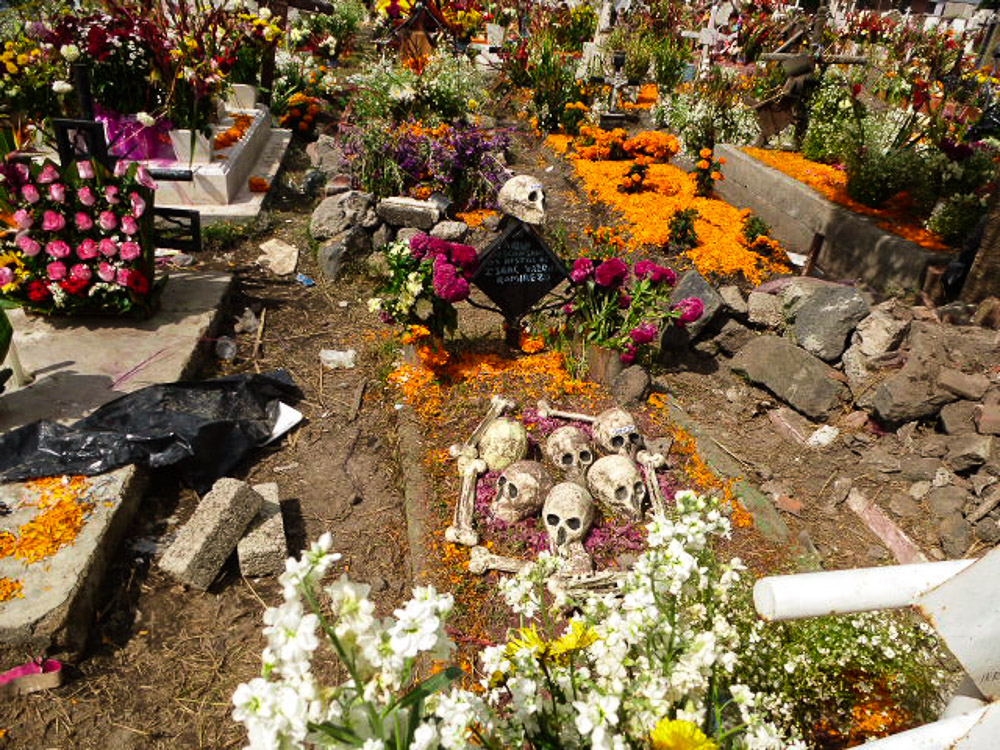
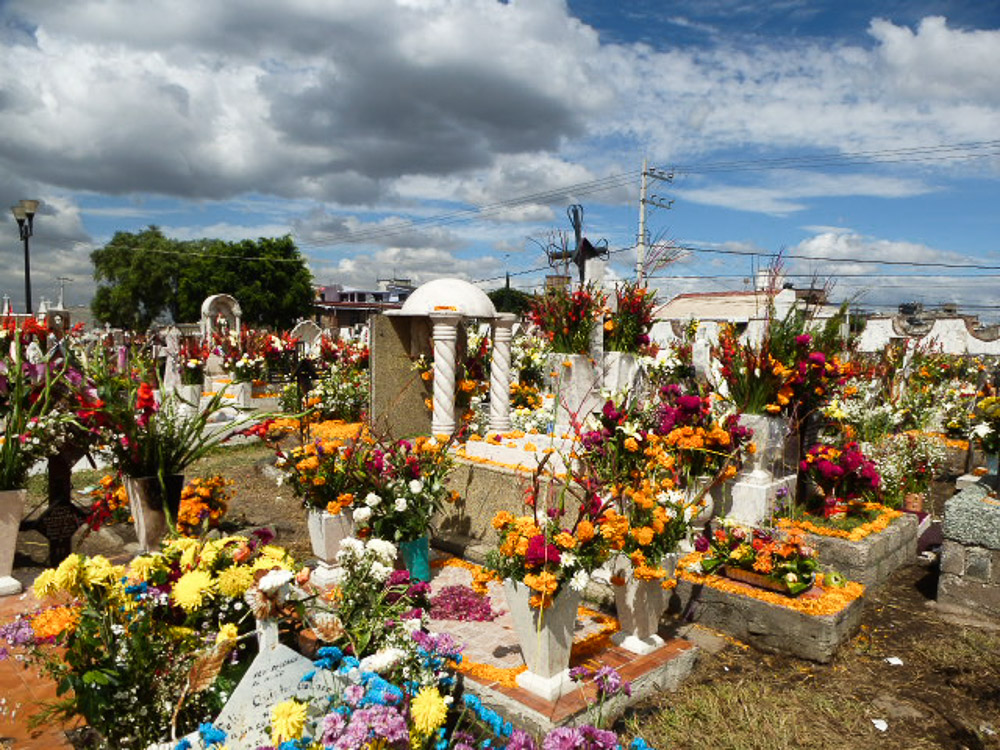
SHARE THIS POST